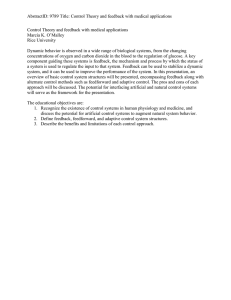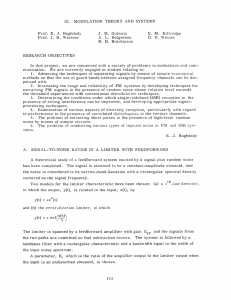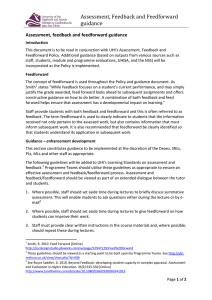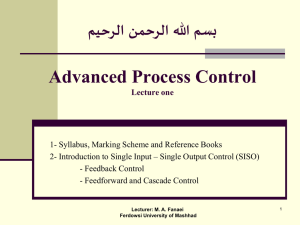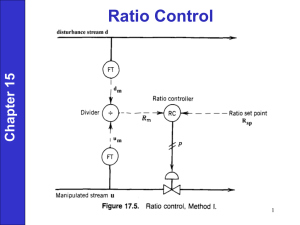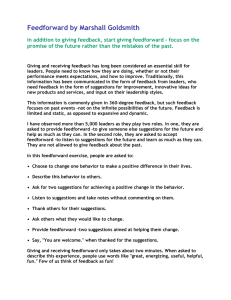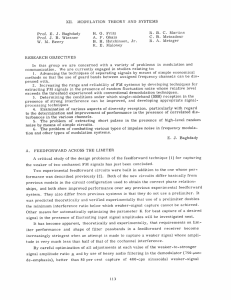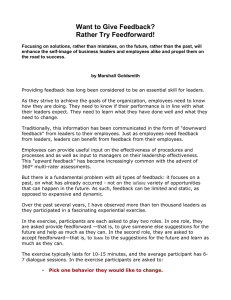VII. MODULATION THEORY AND SYSTEMS
advertisement
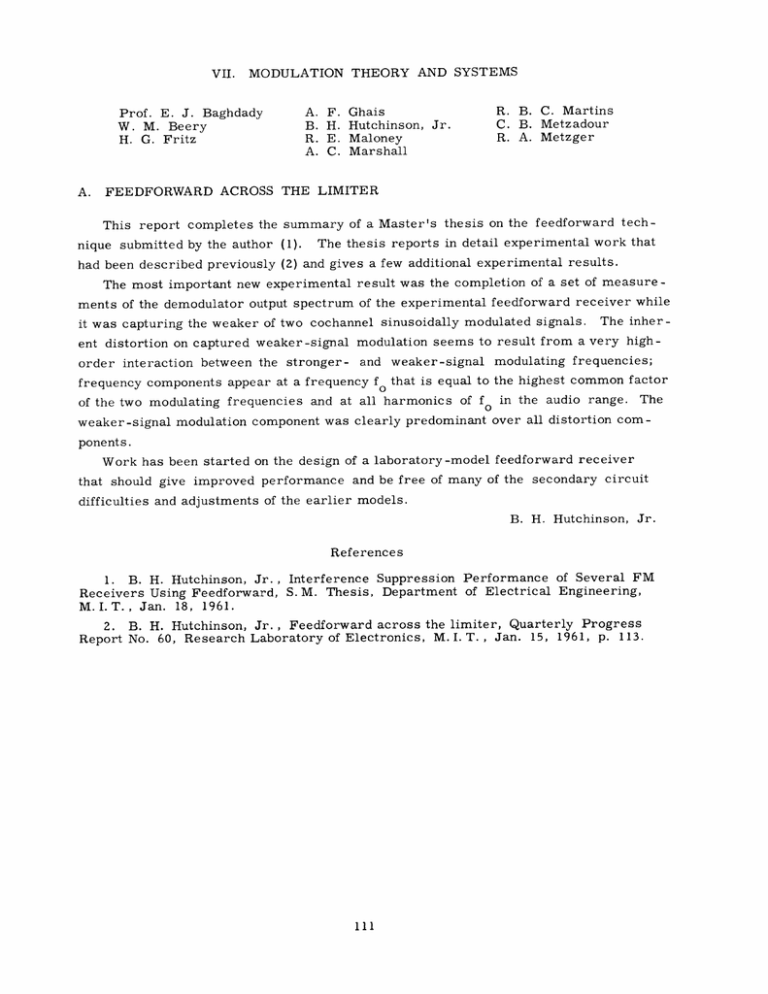
VII. MODULATION THEORY AND SYSTEMS Prof. E. J. Baghdady W. M. Beery H. G. Fritz A. A. B. R. A. F. H. E. C. Ghais Hutchinson, Jr. Maloney Marshall R. B. C. Martins C. B. Metzadour R. A. Metzger FEEDFORWARD ACROSS THE LIMITER This report completes the summary of a Master's thesis on the feedforward techThe thesis reports in detail experimental work that nique submitted by the author (1). had been described previously (2) and gives a few additional experimental results. The most important new experimental result was the completion of a set of measure ments of the demodulator output spectrum of the experimental feedforward receiver while it was capturing the weaker of two cochannel sinusoidally modulated signals. The inher- ent distortion on captured weaker-signal modulation seems to result from a very high- order interaction between the stronger- and weaker-signal modulating frequencies; frequency components appear at a frequency fo that is equal to the highest common factor of the two modulating frequencies and at all harmonics of fo in the audio range. The weaker-signal modulation component was clearly predominant over all distortion components. Work has been started on the design of a laboratory -model feedforward receiver that should give improved performance and be free of many of the secondary circuit difficulties and adjustments of the earlier models. B. H. Hutchinson, Jr. References 1. B. H. Hutchinson, Jr., Receivers Using Feedforward, M.I.T., Jan. 18, 1961. Interference Suppression Performance of Several FM S. M. Thesis, Department of Electrical Engineering, B. H. Hutchinson, Jr., Feedforward across the limiter, Quarterly Progress 2. Report No. 60, Research Laboratory of Electronics, M. I. T., Jan. 15, 1961, p. 113. 111
